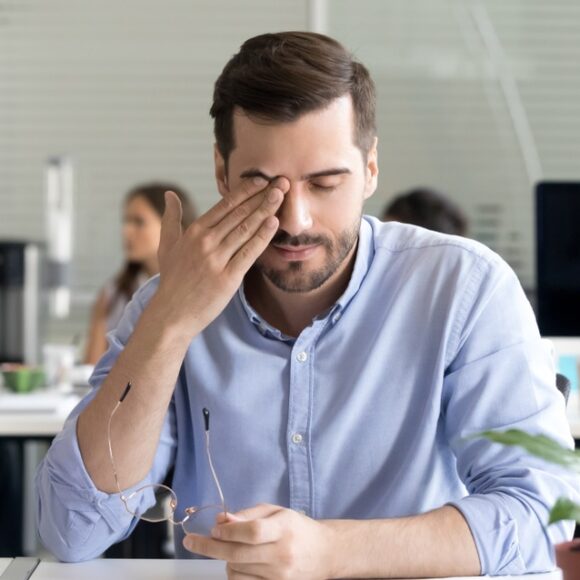
Am I at risk of developing dry eye?
The short answer is that anyone at any age can develop dry eyes and up to 1 in 4 in the UK live with it. 35,36 Certain kinds of activities, lifestyles and environments can trigger it temporarily or make an existing condition worse, for example high air pollution, windy environments, high altitude dust and chemical exposure.37 But for many, developing dry eyes is simply unavoidable. Recent research has shown if you have a parent or grandparent with dry eyes, you could be more likely to develop it.38 Age, hormone changes and other existing health conditions play a big role too.39 Read on to find out more.

Can aging make my eyes dry?
Dry eye is most common in people aged over 50 and those who are going through or have gone through the menopause.40 This is for a few important reasons:
- Tears are made up of fatty oils, water and electrolytes, and mucus and they depend on glands in the body to make these different components.
- The balance is important – good quality tears stick around on the eye’s surface longer, doing a better job at protecting our eyes.
- As you age, these glands become less good at their job.
- Tears become lower quality and you produce less of them.

The menopause and dry eyes
Similarly, menopause and dry eyes are linked – whether you’re in the lead up, going through it, or out the other side – the hormone changes affect the glands and their ability to produce tears. For the same reason, pregnancy can also trigger dry eye, but it’s usually temporary and things go back to normal once the baby is born and hormones settle down.41

Health conditions and dry eye
A range of medical conditions can cause dry eyes, such as rheumatoid arthritis, Sjögren’s syndrome, thyroid disease, systemic lupus erythematosus, as well as Parkinson’s disease and diabetes. You should speak to your doctor if you have any concerns.
- Glaucoma causing dry eyes – Dry eyes in people with glaucoma is common. In fact, studies suggest that 50-60% of people who are being treated for glaucoma also have dry eyes.42
- Sjögren’s Sydrome and dry eyes – Sjögren’s is a condition that usually affects areas of the body that produce fluids, such as tears and saliva. But other parts of the body, such as nerves and joints, can also be affected. Because of this, certain glands stop working, leading to dry eyes and other bodily dryness, including dryness of the mouth and skin.43
- Thyroid conditions affecting dry eyes – There are two main thyroid conditions: Graves’ disease, which causes the thyroid to make too many hormones, and Hashimoto’s thyroiditis, which causes low levels of hormones. Dry eyes are most common in those with Graves’ disease but all people living with thyroid conditions are more at risk.44
Top Tip
People on glaucoma treatment often find that their eyes water so much that tears run down their face. This is actually still dry eyes! It’s caused by an imbalance in the tears’ oil-to-water ratio which blocks the oil glands. Eye drops like Cationorm or Ocutears can hydrate and treat the symptoms of dry eye.
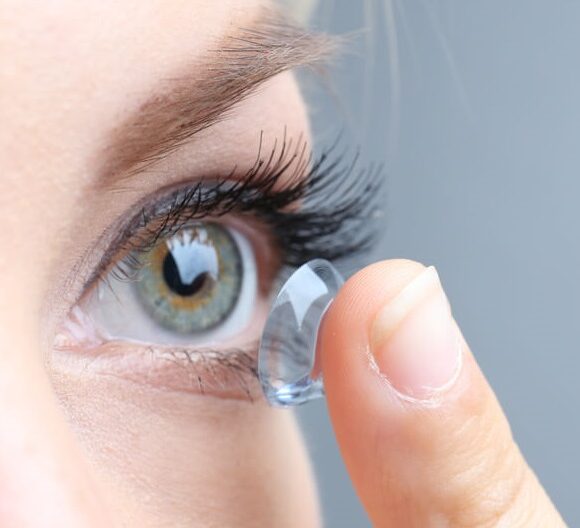
Contact lenses and dry eyes
If you’re a contact lenses wearer, you may have noticed your eyes feeling irritated, dry or gritty if you’ve been wearing them for a while. That’s because, contact lenses reduce the flow of oxygen to the surface of the eye. 45 Our glands which produce our lubricating tears need a steady supply of oxygen so that they can make healthy tears. Over time, this means your eyes get drier as you wear your contacts and that can cause the tell-tale signs of redness, feeling of heaviness, and itchiness.
It’s really common and one study has shown that about half of contact lenses wearers experience dry eyes. 46 The good news is that it’s usually temporary and you don’t need to give up the convenience of contact lenses. Try switching to glasses to give your eyes a break for a few hours a day or once a week. Using disposable contact lenses that you replace daily is also thought to help. 47 Speak to your optician for more information.
Shop our Ocutears range
-
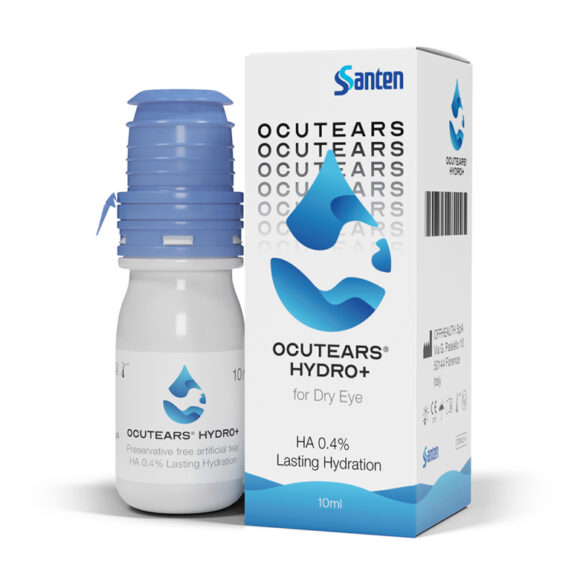
Ocutears® Hydro+
Ocutears Hydro+ eye drops provides long-lasting hydration and relief from sore, stinging, gritty, tired, heavy or watery eyes caused by dry eye. Always read the label.
-
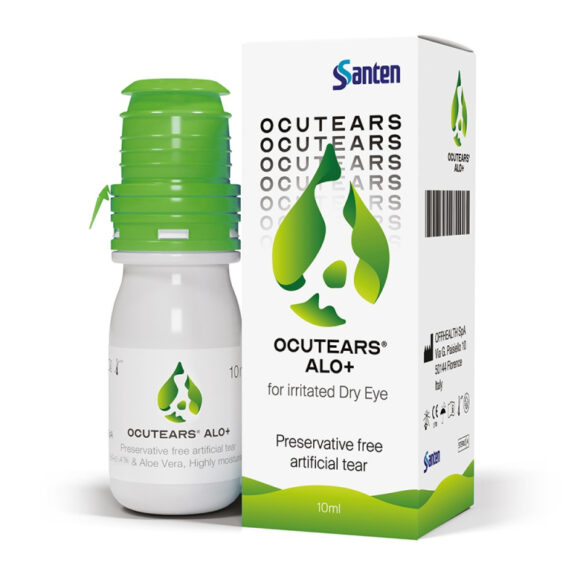
Ocutears® Alo+
Ocutears Alo+ eye drops with aloe vera relieves symptoms of red, irritated and sensitive eyes for prolonged freshness and long-lasting comfort.
-
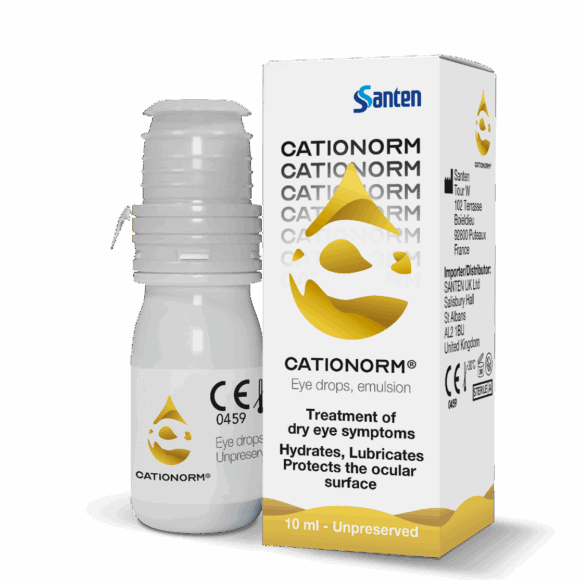
Cationorm® Eye Drops
Cationorm® is a first-of-a-kind eye drop that acts like the body’s natural tears to provide long-lasting relief from the uncomfortable symptoms of dry eyes. Always read the label.
Always read the label
35. https://www.healthline.com/health/chronic-dry-eye/causes-how-to-treat#aging
36. https://www.aop.org.uk/advice-and-support/for-patients/eye-conditions/dry-eye
37. https://www.ncbi.nlm.nih.gov/pmc/articles/PMC7699870/
38. https://www.nature.com/articles/eye2014263
39. https://www.nhs.uk/conditions/dry-eyes/
41. https://www.dryeyecare.net/2021/04/08/whats-the-link-between-dry-eye-and-menopause
42. https://glaucoma.uk/about-glaucoma/dry-eye/
44. https://www.webmd.com/eye-health/dry-eyes-thyroid
45. https://myhealth.alberta.ca/Health/Pages/conditions.aspx?hwid=hw122877
46. https://www.healthline.com/health/great-contact-lenses-dry-eyes#what-is-dry-eye
47. https://www.medicalnewstoday.com/articles/315885#contact-lens-options


